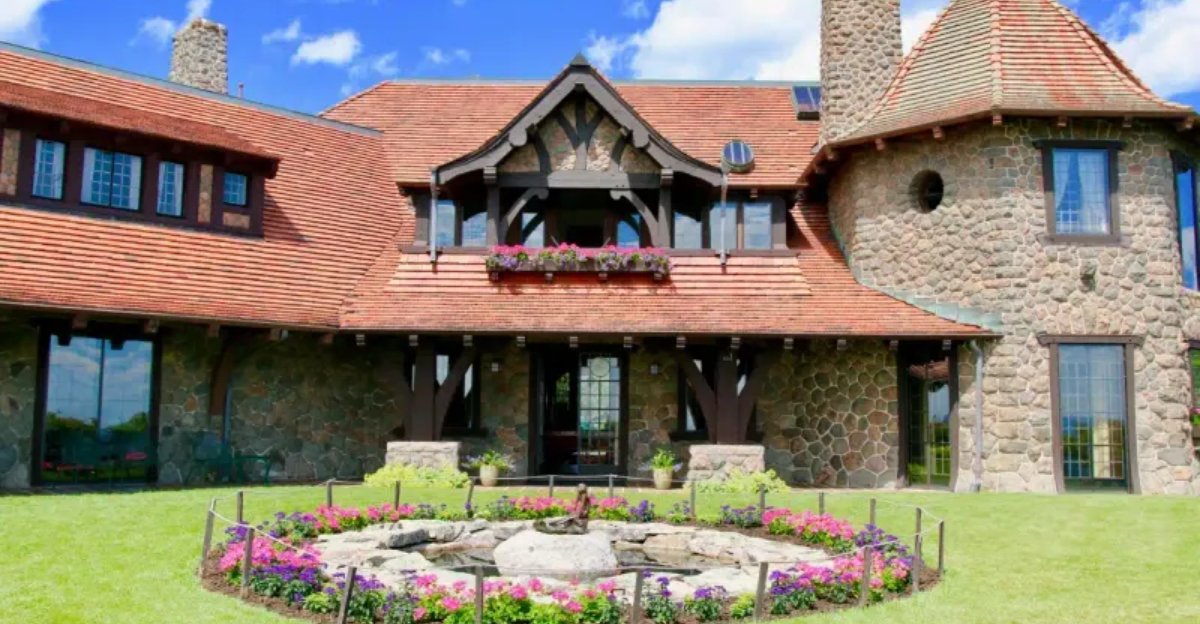Perched at 1,300 feet above sea level, the Castle in the Clouds stands as a testament to human ingenuity and architectural ambition. Built in 1914 by shoe magnate Tom Plant, this Arts and Crafts masterpiece seems to float among the clouds of New Hampshire’s Ossipee Mountains.
What makes this mansion extraordinary isn’t just its breathtaking location, but how it blended old-world craftsmanship with revolutionary innovations decades ahead of their time.
1. Emerging From The Mist
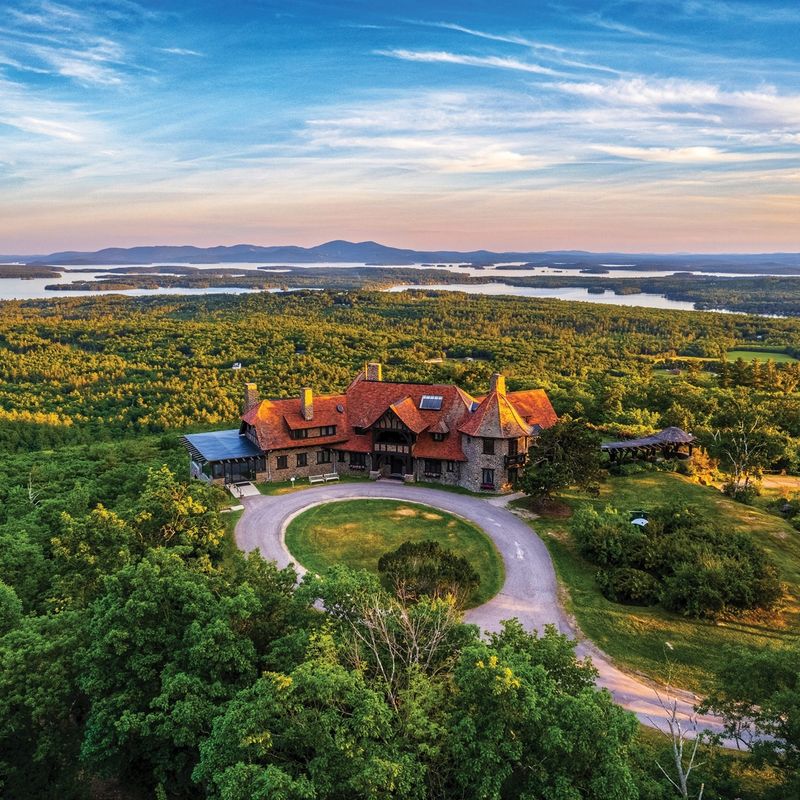
The winding mountain road reveals glimpses of oak and stone through morning fog, teasing what’s to come. Suddenly, there it is—Lucknow Mansion, seemingly suspended between earth and sky.
At 1,300 feet elevation, the estate appears to float above the landscape. Pine-scented air mingles with clouds that sometimes drift below the foundation, creating the illusion of a home untethered from the ground.
2. Grand Entry Hall’s Timeless Welcome
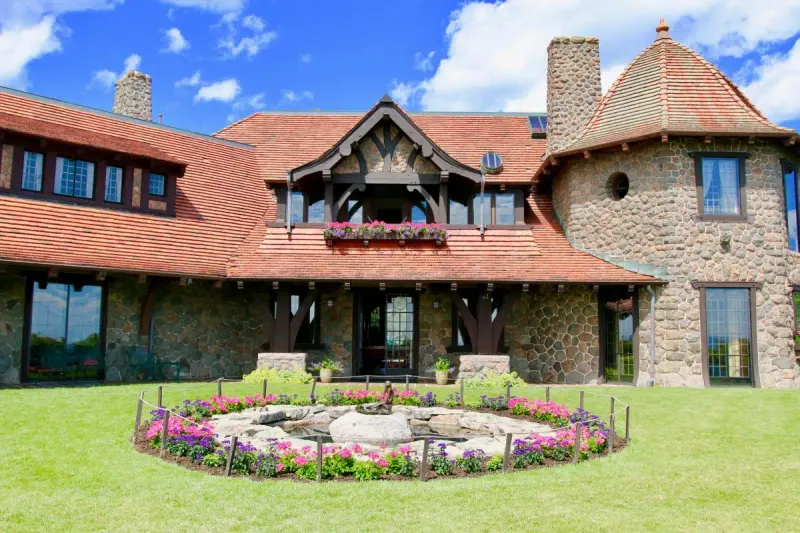
Quarter-sawn oak panels rise to meet exposed beams overhead, their amber warmth capturing sunlight from leaded glass windows. Craftsmen hand-carved every detail, from newel posts to ceiling medallions.
The massive stone hearth—big enough to stand inside—anchors the space like a silent guardian. Visitors often pause here, struck by how the proportions feel both grand and intimate, a hallmark of Arts and Crafts design philosophy.
3. Living Room With Sky-High Views

Mountain ranges unfold like rippling fabric through floor-to-ceiling windows that frame Lake Winnipesaukee below. The craftsman who built these windows created an optical illusion—the glass seems to disappear entirely on clear days.
Handcrafted furniture hugs the perimeter, ensuring nothing competes with nature’s panorama. Even the ceiling beams draw the eye outward, their lines pointing toward distant peaks as if to say, “Look there, not here.”
4. Secret Window Technology
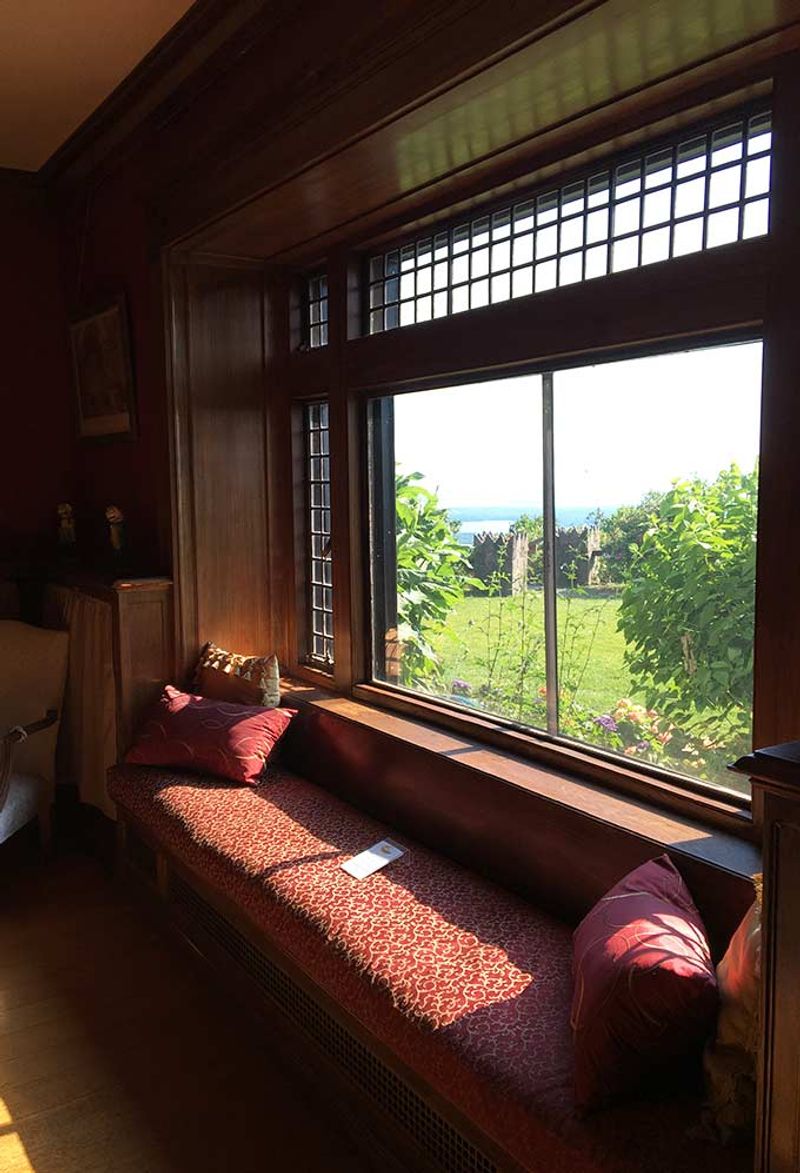
Hidden within these walls lies Thomas Plant’s engineering genius—custom-designed window motors that were revolutionary for 1914. With the touch of a brass button, massive glass panes silently rise or lower, inviting mountain breezes at will.
The mechanisms remain largely original, housed in discrete wooden cabinets. Each motor required custom gearing to handle different window weights, an early example of home automation that predated modern conveniences by decades.
5. Mountain Spring Plumbing System
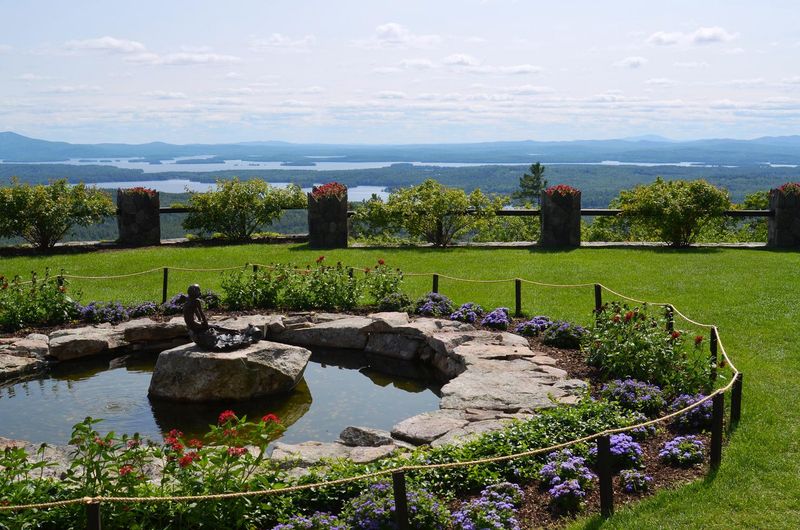
Crystal clear water flows through copper pipes from a mountain spring 300 feet above the mansion. Plant designed this gravity-fed system to provide consistent pressure without electricity—a stroke of sustainable brilliance.
The water travels through a series of stone-lined channels before entering the home. Even today, visitors can drink from original brass taps and taste water that’s been naturally filtered through granite for centuries, untouched by modern treatment.
6. Breakfast Among Treetops
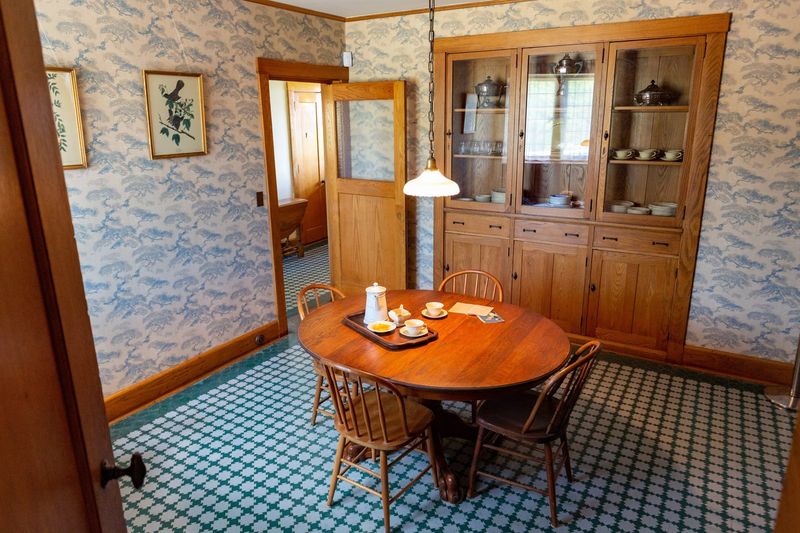
Morning light streams through eastern windows, turning the dining room into a golden sanctuary. The table—crafted from a single massive oak—sits perfectly positioned to watch clouds roll across valleys while enjoying your morning coffee.
Brass chandeliers hang from exposed beams, casting warm light on walls adorned with botanical prints. The room’s design creates an illusion that you’re dining in a sophisticated treehouse, with every seat offering a different perspective of the forest canopy below.
7. Master Bedroom’s Mountain Embrace
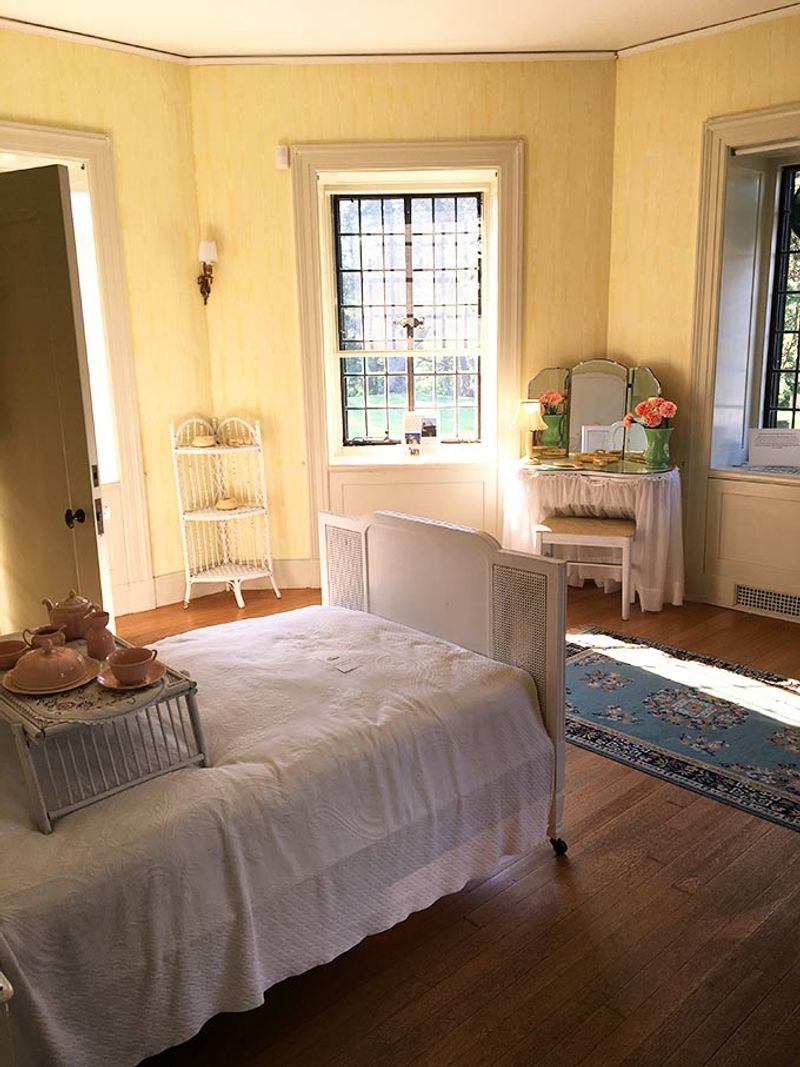
Dawn paints the mountains purple through windows that wrap two full walls of this serene sanctuary. Plant positioned his bed to greet each sunrise over Lake Winnipesaukee, the first light touching hand-stitched quilts made by local artisans.
Built-in dressers of tiger maple eliminate the need for bulky furniture. The room breathes with mountain air through clever cross-ventilation, a natural cooling system that makes summer nights comfortable despite the home’s lack of air conditioning.
8. Marble Bathroom With Alpine Views
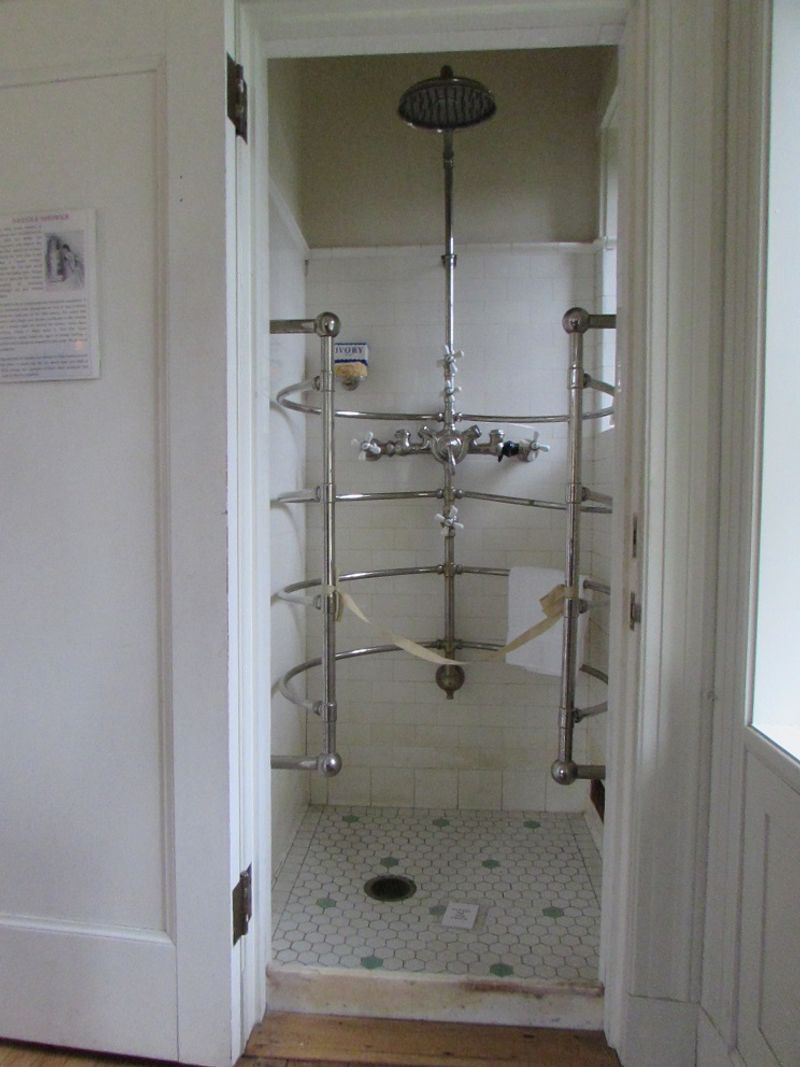
Brass fixtures, hand-polished daily during Plant’s era, have developed a living patina over a century of use. Most remarkable is the heated towel rail—an unheard-of luxury in 1914—powered by the home’s innovative hot water system that circulates through hidden pipes in the walls.
9. Self-Sustaining Farm Complex
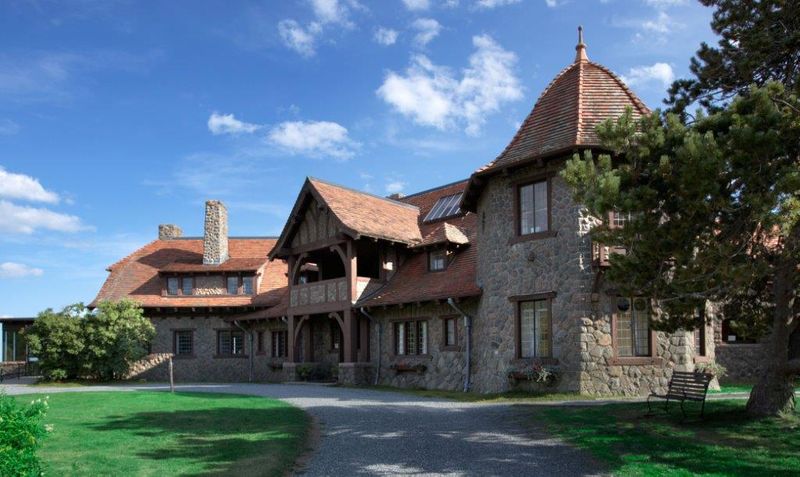
Beyond the mansion’s elegant façade lies Plant’s visionary farm—a model of self-sufficiency that fed his household year-round. Stone stables housed draft horses while nearby barns sheltered Jersey cows and heritage chickens.
Terraced gardens, still visible today, produced vegetables despite the short mountain growing season. Most impressive is the ice house, where workers harvested winter lake ice, insulating it with sawdust from the property’s lumber mill to keep food fresh through summer months.
10. Copper-Clad Kitchen Innovation

Hammered copper countertops—naturally antimicrobial before anyone understood why—gleam alongside white tile in this kitchen that was ahead of its time. The island rotates on a central pivot, allowing staff to serve multiple dining areas without extra steps.
Built-in refrigeration cabinets were cooled by ice harvested from the lake below. Most forward-thinking was the dishwasher—a rarity in 1914—powered by the same gravity-fed water system that supplied the entire estate with mountain spring water.
11. Secluded Library Sanctuary

Tucked away from the home’s showpiece rooms, this intimate library wraps visitors in warmth from floor-to-ceiling bookshelves of bird’s eye maple. A leather reading chair sits beside a discreet window perfectly angled to capture reading light without glare.
Plant’s original collection included first editions of Thoreau and Emerson—kindred spirits who celebrated nature’s grandeur. Secret panels in the lower shelving concealed his business documents, accessible only by pressing hidden levers disguised as decorative wood trim.
12. Handcrafted Spiral Staircase

Curved oak treads spiral upward like a wooden ribbon, each hand-carved by craftsmen who worked on-site for months. No nails mar this masterpiece—only wooden pegs and joinery techniques borrowed from shipbuilders.
Leaded glass windows punctuate the stairwell at unexpected intervals, creating sun-dappled patterns that dance across the steps throughout the day. The banister feels silky-smooth from a century of hands sliding along its surface, the wood developing a honeyed glow impossible to replicate with modern finishes.
13. Precipice Garden Pathways
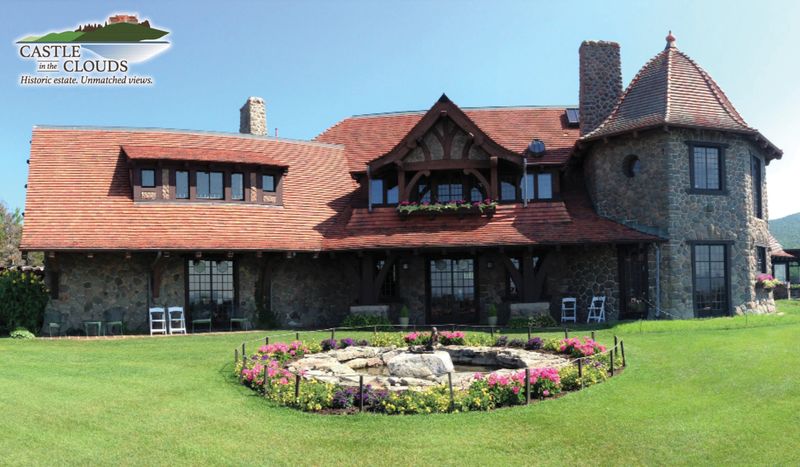
Stone steps, quarried from the mountain itself, meander along cliff edges where alpine gardens bloom against impossible odds. Wrought iron railings—hand-forged on-site—offer the only barrier between visitors and the dizzying drop to the valley floor.
Plant deliberately positioned benches at points where mountains perfectly frame Lake Winnipesaukee below. Moss-covered retaining walls create micro-climates that nurture rare mountain flowers, some transplanted from Plant’s hiking expeditions across New England’s highest peaks.

